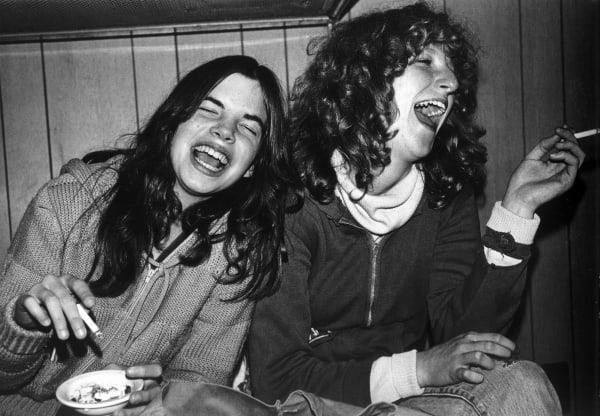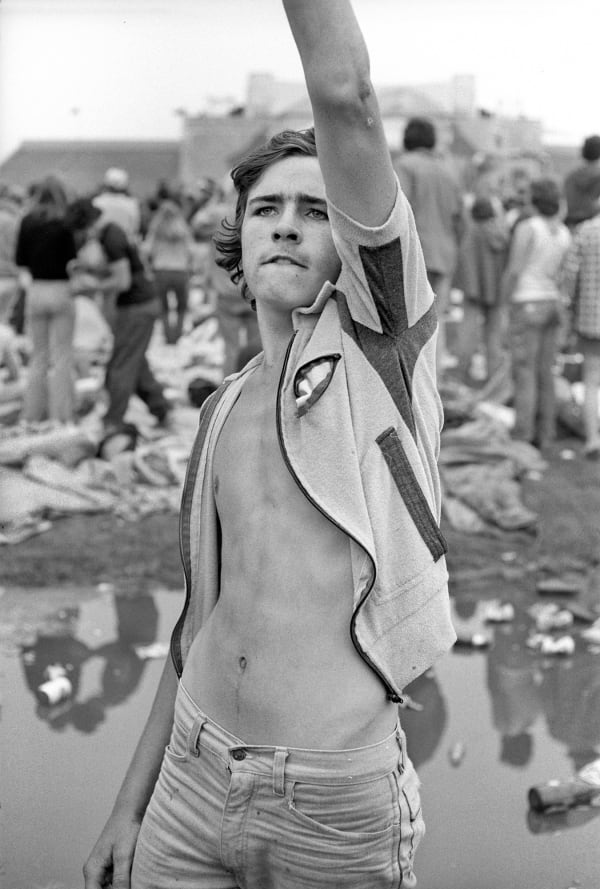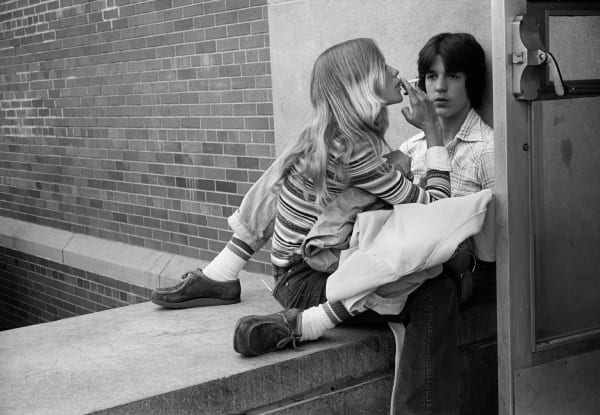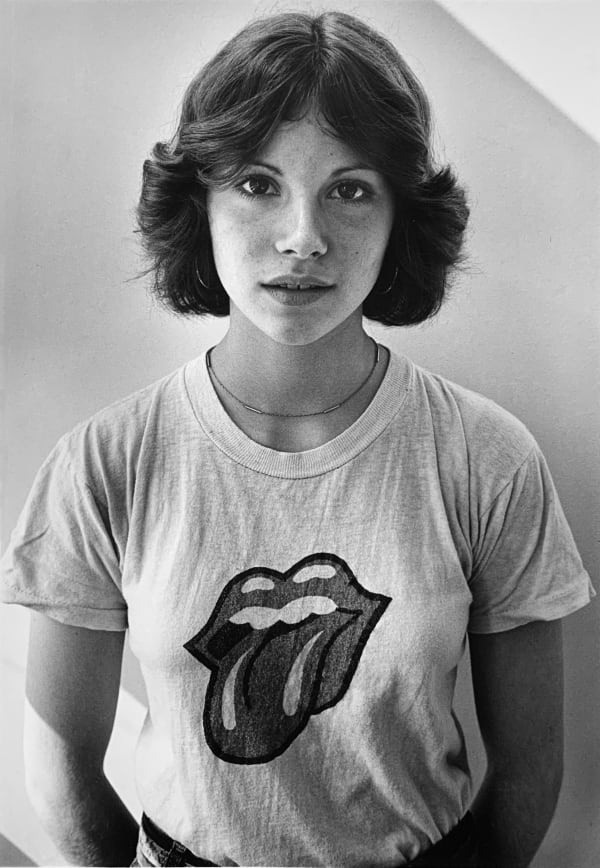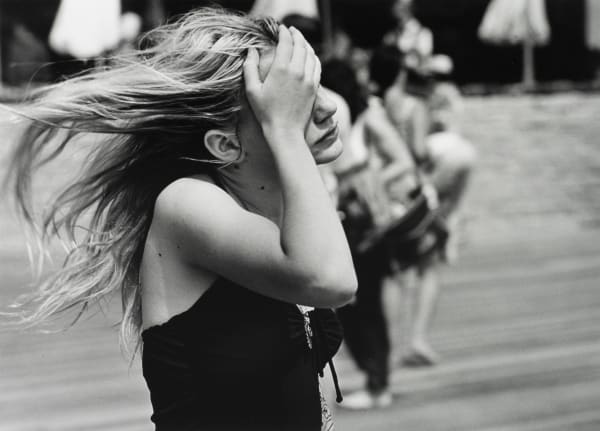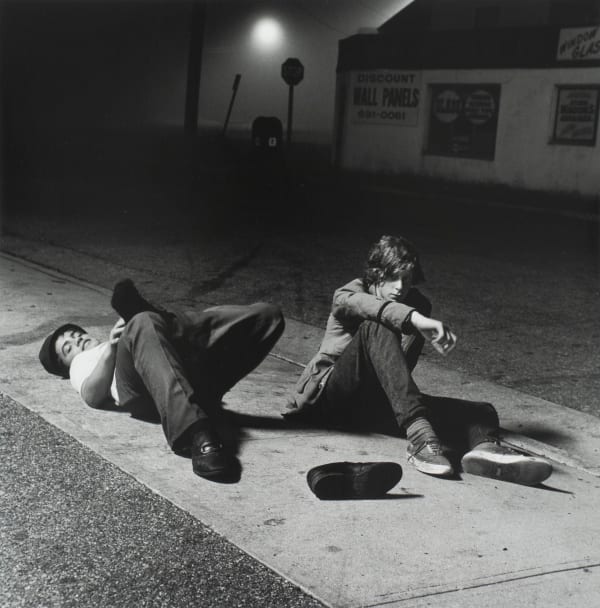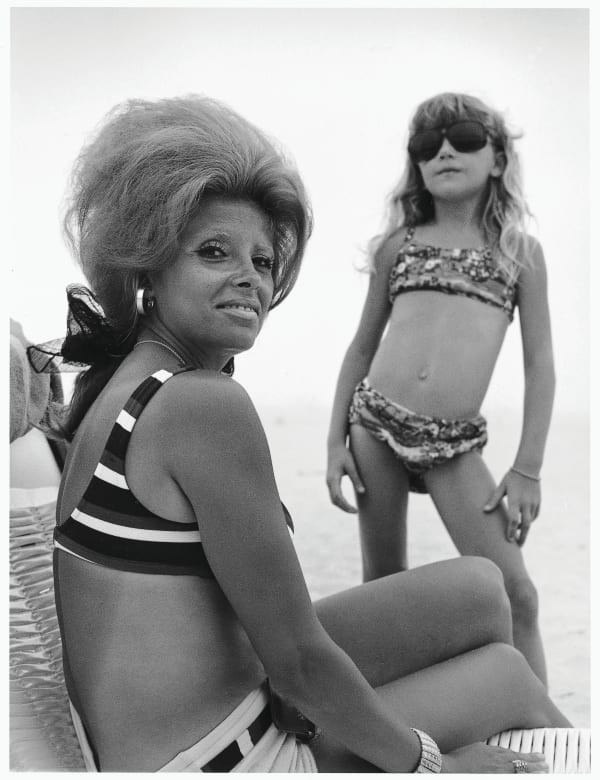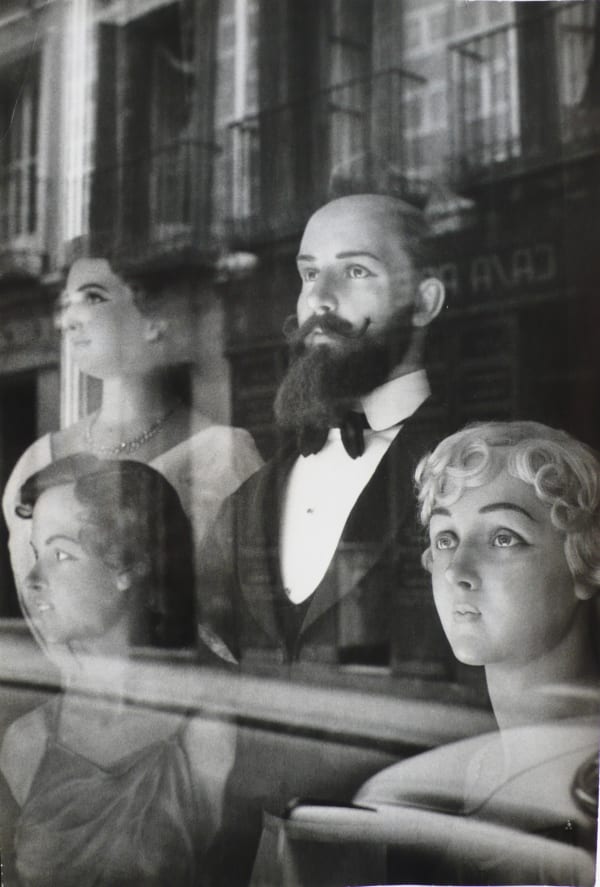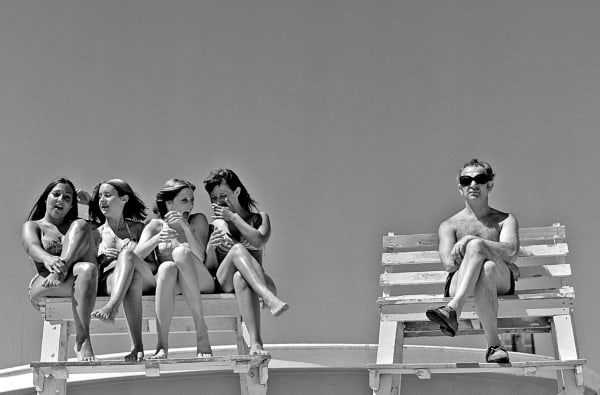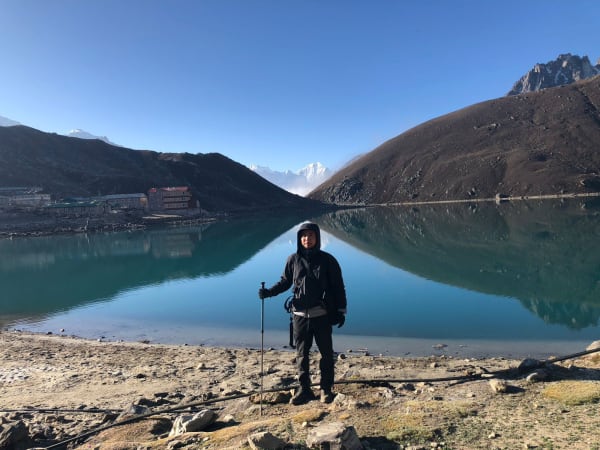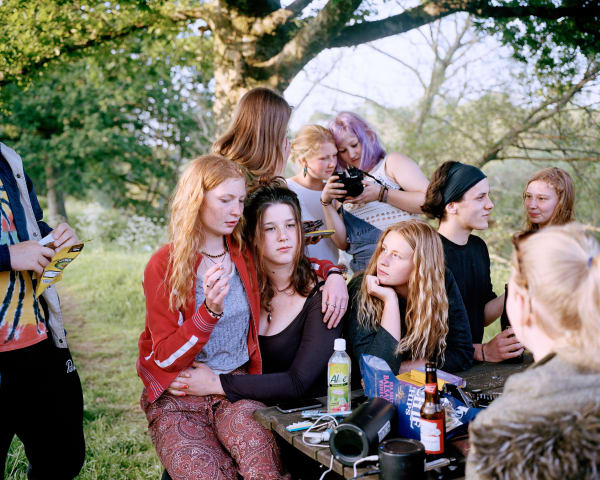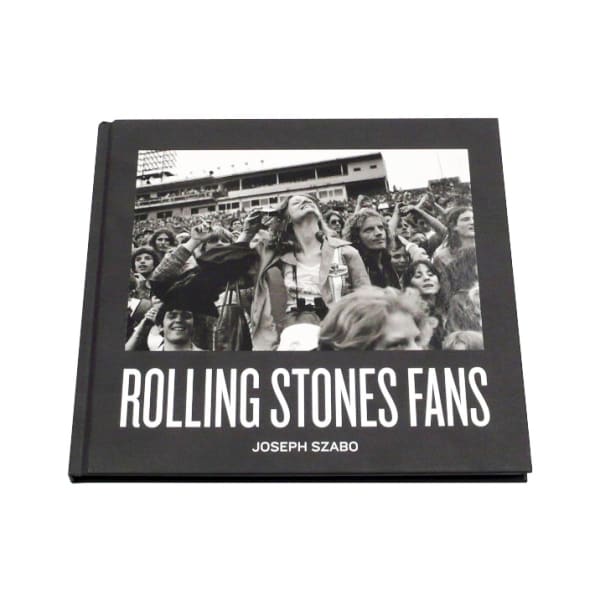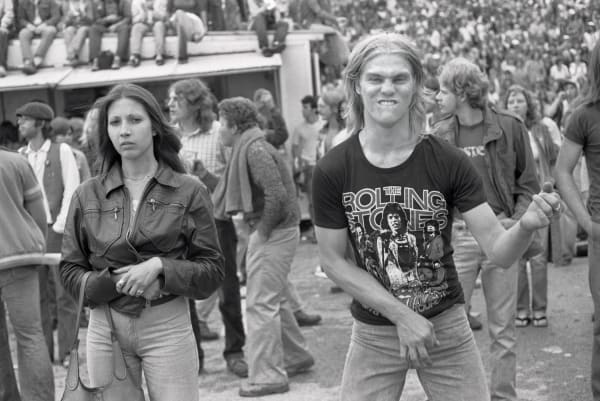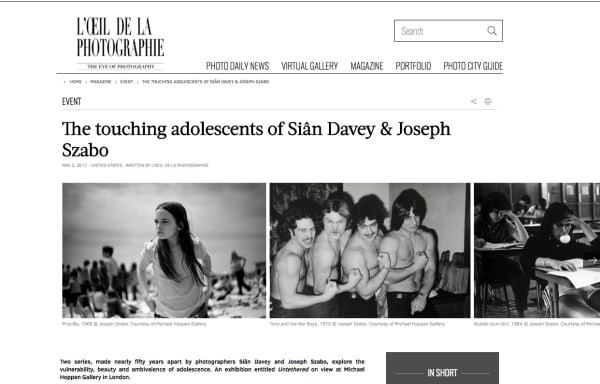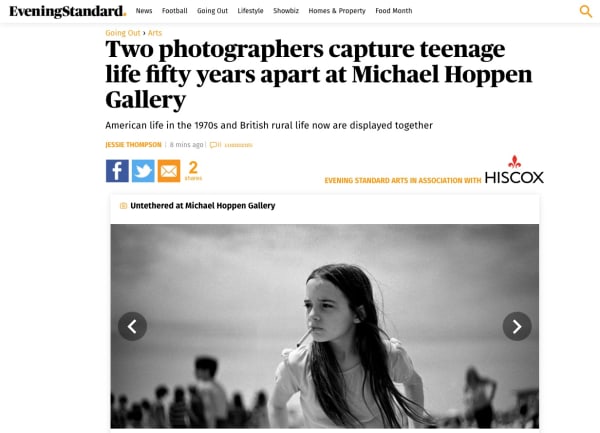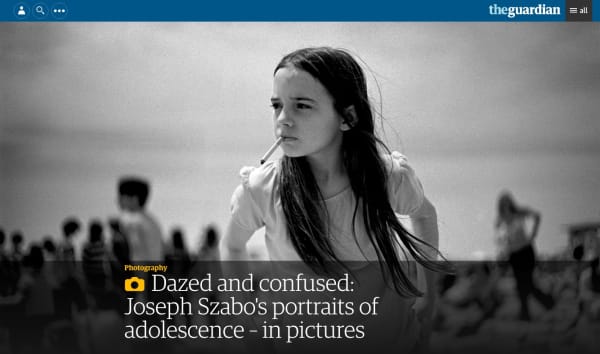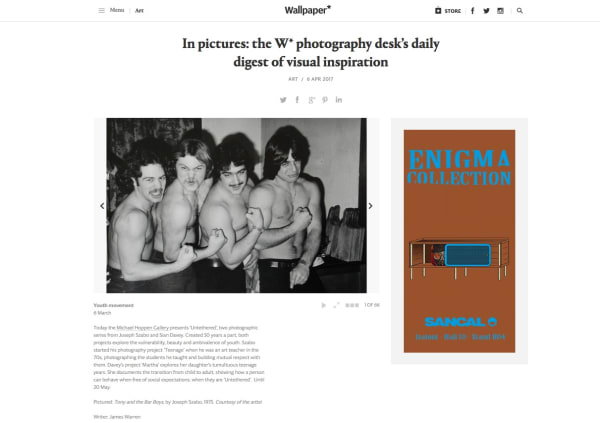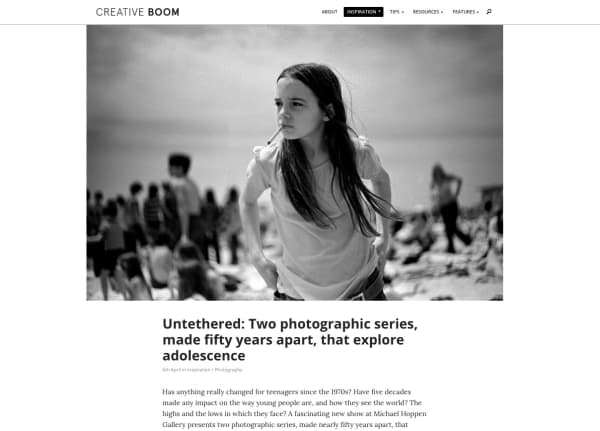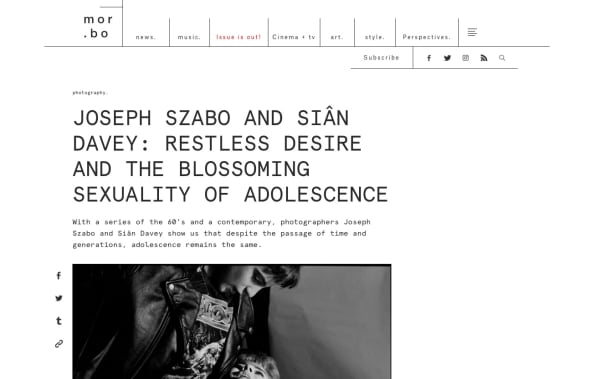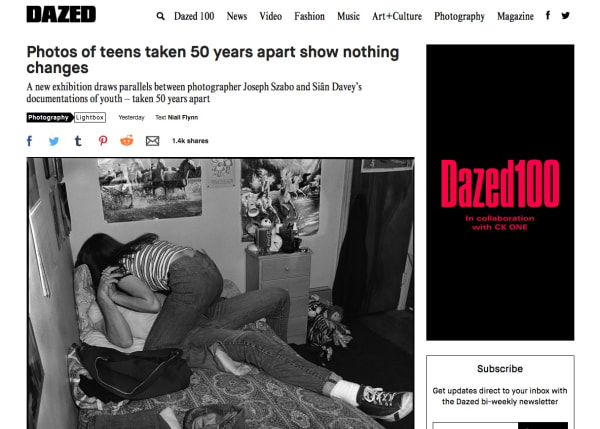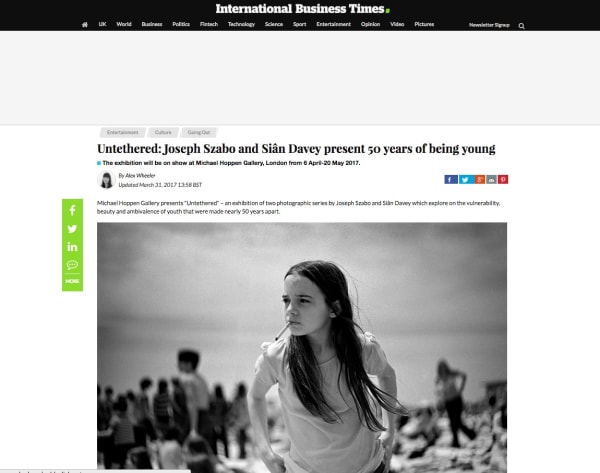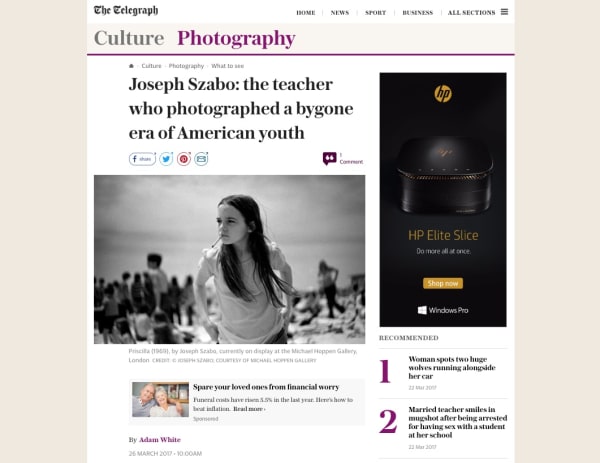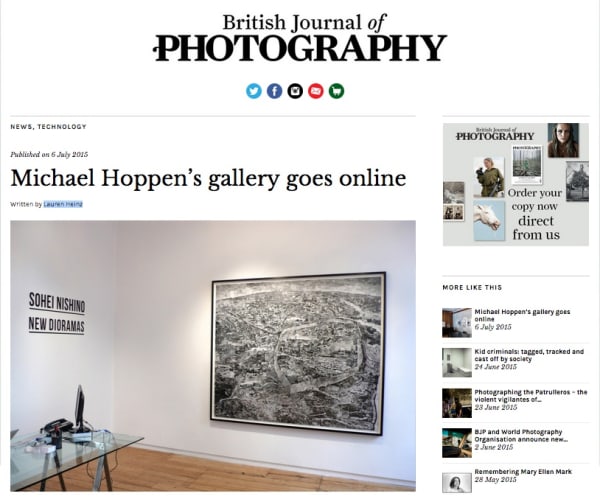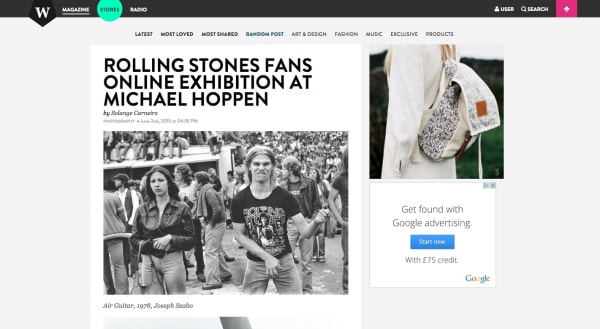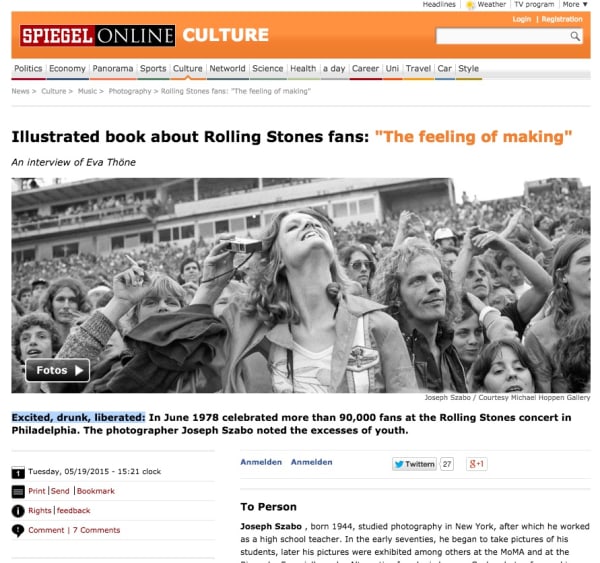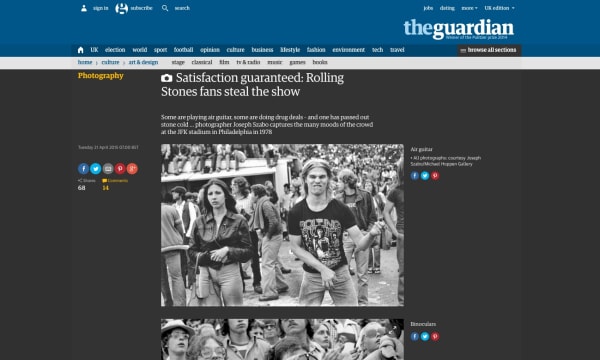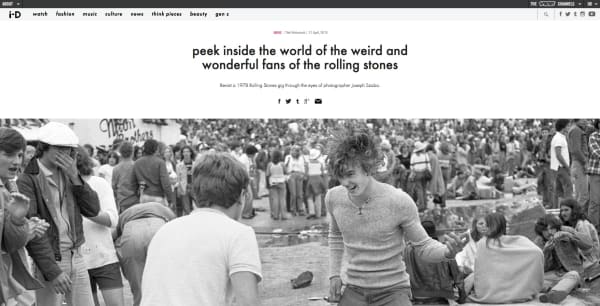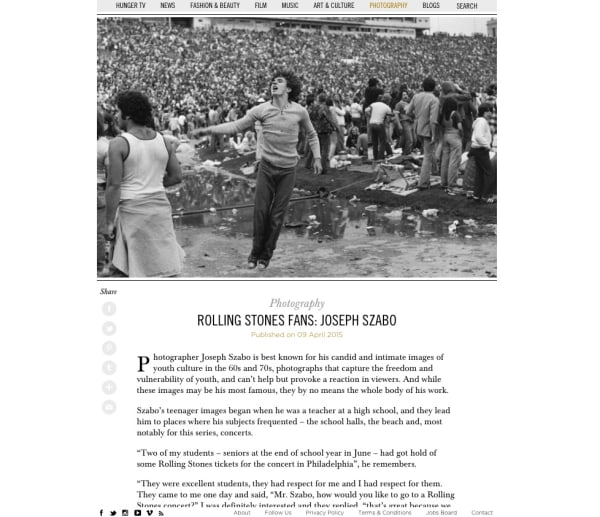Works
Biography
In 1978, as the school year drew to a close, two of Joseph Szabo's high school students, who had tickets to a Rolling Stone Concert, asked if he would like to join them; an invite Szabo readily accepted. He consequently photographed the 90,000 Rolling Stone fans at the John F. Kennedy Stadium in Philadelphia that day. Over thirty years later, he revisited the contact sheets and selected those images that spoke to him after so many years.
Szabo's subject is adolescence and for twenty-five years he documented his teenage students at Malverne High School, Long Island. His photographs of the Long Island youth are a remarkable evocation of the Seventies and Eighties and yet there is also something timeless and compelling about Szabo's portrayal of the universal teenager.
Szabo was born in Toledo, Ohio in 1944. He studied photography at the Pratt Institute, New York where he received his MFA. He taught photography at Malverne High School in Long Island, New York from 1972 to 1999 and he continues to teach at the International Centre of Photography (ICP). He is the recipient of a National Endowment for the Visual Arts Fellowship and his work resides in the permanent collections of the Metropolitan Museum of Art, Yale University, the ICP and the Bibliothèque Nationale in Paris, amongst others. He currently lives in Amityville, New York with his wife Nancy and Siberian Husky, Gala.
Exhibitions
-

JOSEPH SZABO
ALMOST GROWN - EXCLUSIVELY ONLINE 4 Apr - 31 Jul 2019Joseph Szabo black and white silver gelatin prints. Now available to buy and view onlineRead more -

AMERICA!
7 Dec 2018 - 2 Mar 2019From bikers crossing the Ohio River, to stunning views of the Big Sur, giant Marlins' fishing boats and flashing red cars speeding through L.A., the Michael Hoppen Gallery is delighted...Read more -

UNTETHERED
Siân Davey & Joseph Szabo 6 Apr - 20 May 2017Michael Hoppen Gallery is delighted to present two photographic series, made nearly fifty years apart, that explore the vulnerability, beauty and ambivalence of adolescence. Joseph Szabo & Siân DaveyRead more -

PAD 2016
Booth A18 3 - 9 Oct 2016Explore a selection of the works Michael Hoppen Gallery will be taking to PAD, London, 2016Read more -

Rolling Stones Fans
Online Exhibition 14 Apr - 21 Jun 2015A series of images depicting Rolling Stones fans at a gig in Philadelphia, 1978, JFK Stadium. All prints available to purchase online.Read more -

Joseph Szabo
Jones Beach 1 Aug - 18 Sep 2008The Beach, sun, holiday, seaside, family, young love, teens, romance, people, portraits, sandRead more
News
-

IN CONVERSATION
WITH JOSEPH SZABO July 2, 2019In conversation with photographer Joseph SzaboRead more -

Summer Newsletter '18
A review of the past few months at Michael Hoppen Gallery June 28, 2018The Michael Hoppen Gallery Summer newsletter 2018Read more -

Siân Davey
New Photographer represented March 1, 2017MHG announces new photographer represented, Siân DaveyRead more -

Rolling Stones Fans
The brand new edition by Joseph Szabo May 7, 2015Rolling Stones Fans at a gig in Philadelphia, 1978. Joseph Szabo was invited along and captured this timeless event on film.Read more -

It's only Rock n' Roll
Rolling Stones fans: Joseph Szabo April 22, 2015Rolling Stones fans book & his amazing prints are available to purchase online. philadelphia, USA, concert, gig.Read more
Press
-

The touching adolescents of Siân Davey & Joseph Szabo
L'Oeil de la Photographie, May 3, 2017 -

Two photographers capture teenage life fifty years apart at Michael Hoppen Gallery
JESSIE THOMPSON, Evening Standard, April 20, 2017 -

Dazed and confused: Joseph Szabo's portraits of adolescence – in pictures
The Guardian, April 14, 2017 -

In pictures: the W* photography desk’s daily digest of visual inspiration
James Warren, Wallpaper* Magazine, April 7, 2017 -

Untethered: Two photographic series, made fifty years apart, that explore adolescence
Katy Cowan, Creative Boom, April 7, 2017 -

JOSEPH SZABO AND SIÂN DAVEY: RESTLESS DESIRE AND THE BLOSSOMING SEXUALITY OF ADOLESCENCE
ismorbo, April 7, 2017 -

Exhibition: Untethered, Joseph Szabo & Siân Davey
DPN, April 6, 2017 -

Photos of teens taken 50 years apart show nothing changes
Niall Flynn, DAZED magazine, April 5, 2017 -

Untethered: Joseph Szabo and Siân Davey present 50 years of being young
Alex Wheeler, International Business Times, March 31, 2017 -

Joseph Szabo: the teacher who photographed a bygone era of American youth
Adam White , Sunday Telegraph, March 26, 2017 -

Michael Hoppen's gallery goes online
Lauren Heinz, The BJP, July 6, 2015 -

ROLLING STONES FANS ONLINE EXHIBITION AT MICHAEL HOPPEN
by Solange Carneiro, We are selectors, June 2, 2015 -

Why Joseph Szabo’s Rolling Stones Fans Matters to Fashion, and Beyond: The Photographer on How He Gets the Picture
Rebecca Bengal, Vogue, May 22, 2015 -

Illustrated book about Rolling Stones fans: "The feeling of making"
Eva Thöne, Spiegel, May 19, 2015 -

Joseph Szabo’s incredible photo series captures 90,000 Rolling Stones fans high on life
Alex James Taylor, Hero Magazine, May 6, 2015 -

Satisfaction guaranteed: Rolling Stones fans steal the show
The Guardian, art & design, April 21, 2015 -

Peek inside the world of the weird and wonderful fans of the rolling stones
Vice UK, Online, April 21, 2015 -

ROLLING STONES FANS: JOSEPH SZABO
HungerTV.com, April 9, 2015
Enquire

